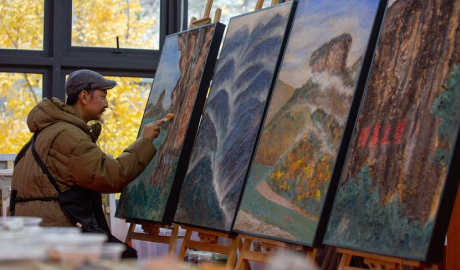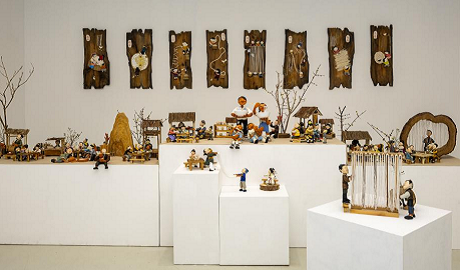

The Qiang flute is an ancient Chinese single-reed wind instrument with a history of over 2,000 years. Pronounced as “qi li”, “shi bu li” or “bang” in the Qiang language, the flute consists of two bamboo tubes of about 15-20 cm long with the same size of juxtaposed holes. The two tubes, made either of bamboo or bone, are wrapped together with silk thread with a reed whistle at the blowhole. The length, hole spacing and pitch of the two tubes are the same. Each tube contains five or six holes. When playing, the flute is held in both hands, and the reed whistle is held in the mouth.
The Qiang flute is generally made of straight, round, long knotted bamboo, with balanced and even thickness at the head and tail. The bamboo must be hard and contain tight fibers. Arrow bamboos are preferably the most suitable raw material as they’re unlikely to crack or fracture. The pitch is measured by the length, thickness and the diameter of the bamboo tube.
There are no written forms of the Qiang language, hence the Qiang flute has become an important means for expressing their emotions, and the Qiang people often use it to express their joy, anger, sadness and pleasure. When an enchanting melody is played, the ancient culture engraved in the genes of the Qiang people is brought back to life with vitality and vibrance of the ethnic group floating on this vast land.
Producer: Yang Gu
Chief Supervisor: Chen Jiandong, Song Leyong
Chief Planner: Che Jingwen, Jin Linghan
Script Writer: Yue Pei
Coordinator: Zhou Shuodi, Tao Yanyan, Yang Jingyi
Co-produced by: China Internet Development Foundation and neamco.com

Wuyi rock pigment painting in China's Fujian infuses modern artistic elements into tradition

China-Serbia digital art exhibition explores time, space, heritage


Exhibition of children's arts opens in southwest China's Chongqing

World's largest ice and snow theme park opens, igniting China's winter tourism fever
点击右上角![]() 微信好友
微信好友
 朋友圈
朋友圈

请使用浏览器分享功能进行分享
